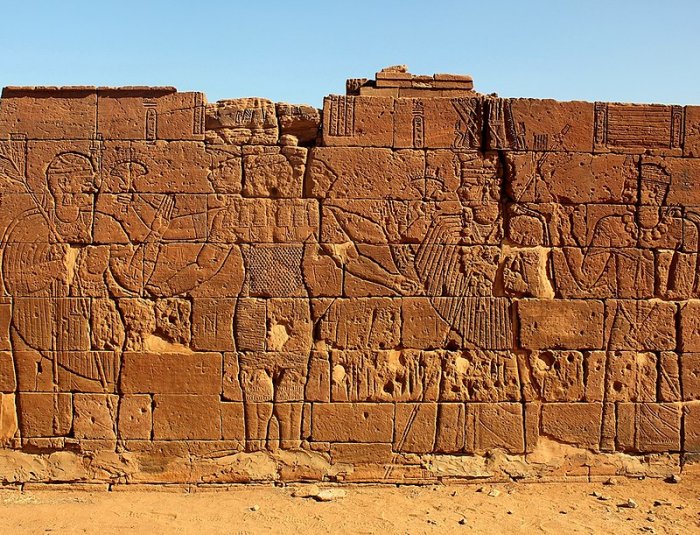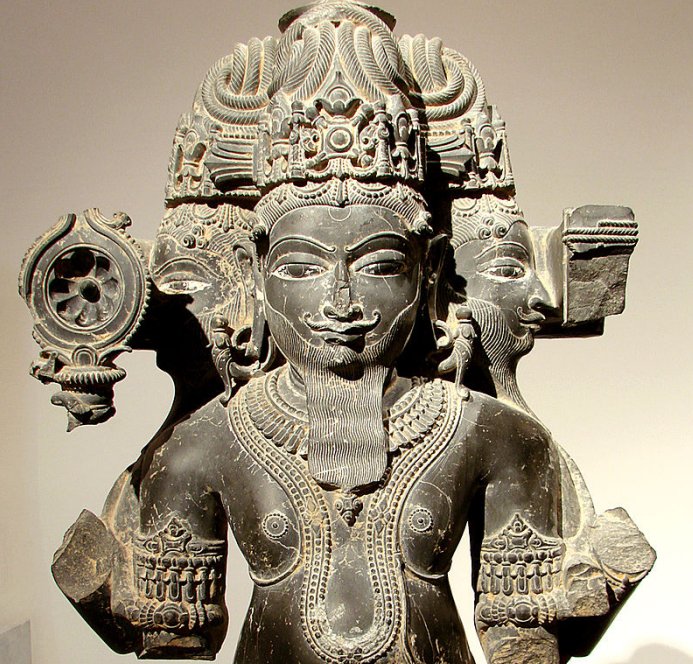Apedemak: Did The Three-Headed Lion War God Of Kush Originate From Ancient India?
Ellen Lloyd - AncientPages.com - Considered the war god of Kush, Apedemak was worshiped in ancient Meroe, a once magnificent and wealthy capital in the kingdom of Kush in Nubia, present-day Sudan.
Today, there are few ancient remains of the stunning buildings built by the Meroitics, but archaeologists have been able to confirm the tall, slender pyramids, paintings, writing script, and other artistic and cultural forms made by the Nubian people were in the Egyptian style.
Three-headed Apedemak with four arms depicted at Naqa Lion Temple. Clemens Schmillen, CC BY-SA 4.0
Three Kushite kingdoms dominated Nubia for more than 3,000 years, with capitals in Kerma, Napata, and Meroe.
The ancient kingdom of Kush was very powerful and rival to Egypt, but there were many similarities between these two ancient civilizations.
God Apedemak (Apademak) was worshipped in various parts of Nubia. He was held in high regard because people believed this mighty deity brought victories to their armies and defeated their enemies.
There are various depictions of Apedemak. In several Meroitic temples, God Apedemak is depicted as a lion with three heads and four arms. Sometimes he is portrayed as a snake with a lion head, or simply a man with a lion head.
Studies reveal “the figure of Apedemak decidedly prevails, either human-bodied and lion-headed; or in zoomorphic figure representing him either as war-god with bow and arrows; or as a benefactor of mankind offering ankh-signs. However, his royal character is emphasized by the hemhem crown and his solar character is stressed by the sun-disk with wings and uraei." 1
Can God Apedemak Be Traced To Ancient India?
Some scholars have speculated whether God Apedemak can be traced to ancient India. If true, the lion God Apedemak may be one of the few gods depicted on the walls of Meroitic temples who does not have an Egyptian origin.
Archaeological excavations reveal that ”the Meroites, although having gods of their own, drew heavily on Pharaonic and Ptomemaic Egyptian ideas and motifs in depicting them as well as incorporating Egyptian gods into their own pantheon.” 2
In the book, Apedemak, Lion God of Meroe: A Study in Egyptian Meroitic Syncretism. L.V. Zabkar explores the theory the war god of Kush was created in the images of ancient Indian deities. 2
Sculpture of Brahma, Guimet Museum, Paris, France. Image source: Vassil - Public Domain.
“The book reviews in detail what is known of Apedemak, describes the numerous representations and shows how much of the iconogrpahy of this god is of Egyptian origin – even those aspects which have led some scholars to suggest influences from India, particularly in the multi-armed and-headed representation on the west wall of the lion temple at Naqa. Zabkar goes into some detail on this matter, arguing that there is plenty of evidence from Egypt to account for the so-called Indian aspects.” 3
Famous Hindu god Shiva is depicted with multiple heads and arms. Hindu God Brahma is a deity with four faces and four arms, sitting on a lotus flower, in a chariot (vahana), pulled by divine swans. Each face of Brahma points to a cardinal direction, but is this enough to draw parallels between the Kushite war god Apedemak and ancient Indian deities?
Apedemak is represented as a coiled snake with a lion’s head at Naqa Lion Temple. Clemens Schmillen, CC BY-SA 4.0
Most scholars think though the representation of Apedemak is exotic, it is still a deity that was influenced by the Meroites’ own artistic models that can be traced to ancient Egypt.
One must remember that the lion has been a powerful ancient symbol for thousands of years.
Ancient civilizations associated the lion with power and royalty and we can find this majestic animal on prehistoric cave paintings, ancient Sumerian and Egyptian artifacts dating back to 3000 B.C. as well as several ancient monuments like for example the marvelous lion gates in Hattusha, the capital of the kingdom of the Hittites.
Written by Ellen Lloyd – AncientPages.com
Copyright © AncientPages.com All rights reserved. This material may not be published, broadcast, rewritten or redistributed in whole or part without the express written permission of AncientPages.com
Expand for references- Vincentelli, Irene. "A Group of Figurated Clay Sealings from Jebel Barkal (Sudan)." Orientalia, NOVA SERIES, 61, no. 2 (1992)
- Shinnie, P.L. The International Journal of African Historical Studies 10, no. 3 (1977): 492-94. doi:10.2307/216747.
- V Zabkar - Apedemak, Lion God of Meroe
More From Ancient Pages
-
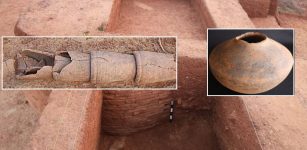 2,000-Year-Old Trade Center: Brick Structure, A Vishnu Sculpture Among Findings In Andhra Pradesh
Archaeology | Nov 6, 2019
2,000-Year-Old Trade Center: Brick Structure, A Vishnu Sculpture Among Findings In Andhra Pradesh
Archaeology | Nov 6, 2019 -
 Callacpuma’s Megalithic Stone Circular Plaza Was Constructed Using A Technique Previously Unseen In The Andes
Archaeology | Feb 15, 2024
Callacpuma’s Megalithic Stone Circular Plaza Was Constructed Using A Technique Previously Unseen In The Andes
Archaeology | Feb 15, 2024 -
 Scientists In Antarctica Encounter Something Very Strange
Featured Stories | Mar 9, 2020
Scientists In Antarctica Encounter Something Very Strange
Featured Stories | Mar 9, 2020 -
 Mystery Of Vitrified Scottish Fort Dun Deardail And Ancient Myth Deirdre Of The Sorrows: Is There A Prehistoric Connection?
Civilizations | Feb 5, 2021
Mystery Of Vitrified Scottish Fort Dun Deardail And Ancient Myth Deirdre Of The Sorrows: Is There A Prehistoric Connection?
Civilizations | Feb 5, 2021 -
 In Ancient Times We Had Weeks Of Different Lengths
Ancient History Facts | Sep 6, 2016
In Ancient Times We Had Weeks Of Different Lengths
Ancient History Facts | Sep 6, 2016 -
 On This Day In History: Admiral Richard E. Byrd Made His First Flight Over The South Pole – On Nov 29, 1929
News | Nov 29, 2016
On This Day In History: Admiral Richard E. Byrd Made His First Flight Over The South Pole – On Nov 29, 1929
News | Nov 29, 2016 -
 Nakano Takeko – Courageous Female Samurai Who Died Tragically While Defending The Aizu-Wakamatsu Castle
Featured Stories | Apr 24, 2021
Nakano Takeko – Courageous Female Samurai Who Died Tragically While Defending The Aizu-Wakamatsu Castle
Featured Stories | Apr 24, 2021 -
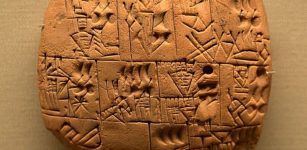 Uruk – Home To The Legendary Hero Gilgamesh
Featured Stories | Jun 6, 2021
Uruk – Home To The Legendary Hero Gilgamesh
Featured Stories | Jun 6, 2021 -
 Unique Female Viking Grave In Swedish Mountains Reveals Its Secrets
Archaeology | Jul 14, 2023
Unique Female Viking Grave In Swedish Mountains Reveals Its Secrets
Archaeology | Jul 14, 2023 -
 Rare Well-Preserved Viking Artifacts Lost On Mountain Pass – Revealed By Retreating Glaciers
Archaeology | Apr 16, 2020
Rare Well-Preserved Viking Artifacts Lost On Mountain Pass – Revealed By Retreating Glaciers
Archaeology | Apr 16, 2020 -
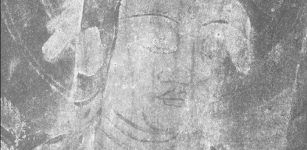 1,300-Year-Old Paintings Depicting Eight Buddhist Saints Revealed By Infrared Cameras
News | Oct 1, 2020
1,300-Year-Old Paintings Depicting Eight Buddhist Saints Revealed By Infrared Cameras
News | Oct 1, 2020 -
 Astonishing Pre-Inca Salt Ponds of Maras In Peru Were Created By The Chanapata Culture
Civilizations | Sep 14, 2016
Astonishing Pre-Inca Salt Ponds of Maras In Peru Were Created By The Chanapata Culture
Civilizations | Sep 14, 2016 -
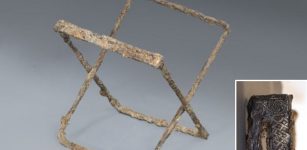 Extremely Rare Medieval Folding Chair Reveals Its Secrets
Archaeology | Oct 13, 2023
Extremely Rare Medieval Folding Chair Reveals Its Secrets
Archaeology | Oct 13, 2023 -
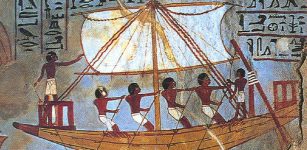 Mysterious Sherbrooke Stones – Did Africans Visit North America 2,500 Years Ago?
Artifacts | Nov 23, 2017
Mysterious Sherbrooke Stones – Did Africans Visit North America 2,500 Years Ago?
Artifacts | Nov 23, 2017 -
 What Is Pax Sinica?
Ancient History Facts | Apr 26, 2018
What Is Pax Sinica?
Ancient History Facts | Apr 26, 2018 -
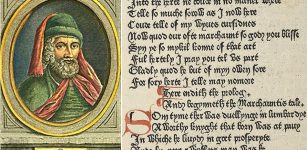 On This Day In History: William Caxton Printed His First Book – On Nov 18, 1477
News | Nov 18, 2016
On This Day In History: William Caxton Printed His First Book – On Nov 18, 1477
News | Nov 18, 2016 -
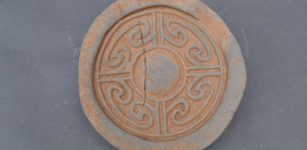 Discovered Inscription On Ancient Stone Vessel Reveals Location Of Legendary Tomb Of Chinese Emperor
Archaeology | Jan 11, 2021
Discovered Inscription On Ancient Stone Vessel Reveals Location Of Legendary Tomb Of Chinese Emperor
Archaeology | Jan 11, 2021 -
 Sami People: Facts And History About The Only Indigenous People Of Most Northern Europe
Civilizations | Sep 25, 2016
Sami People: Facts And History About The Only Indigenous People Of Most Northern Europe
Civilizations | Sep 25, 2016 -
 Young Boy Discovers Rare Ancient Roman Treasure In Sussex, UK
Archaeology | Apr 15, 2024
Young Boy Discovers Rare Ancient Roman Treasure In Sussex, UK
Archaeology | Apr 15, 2024 -
 Incredible Shipwreck With Fascinating Cargo Found 1,200 Years After Sinking In Holy Land
Archaeology | Sep 22, 2022
Incredible Shipwreck With Fascinating Cargo Found 1,200 Years After Sinking In Holy Land
Archaeology | Sep 22, 2022

